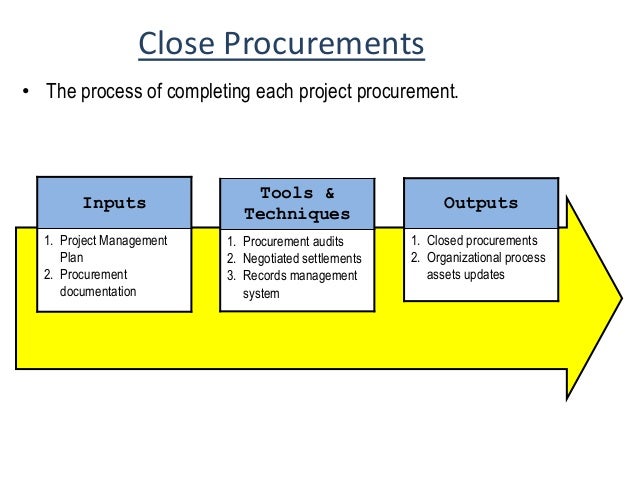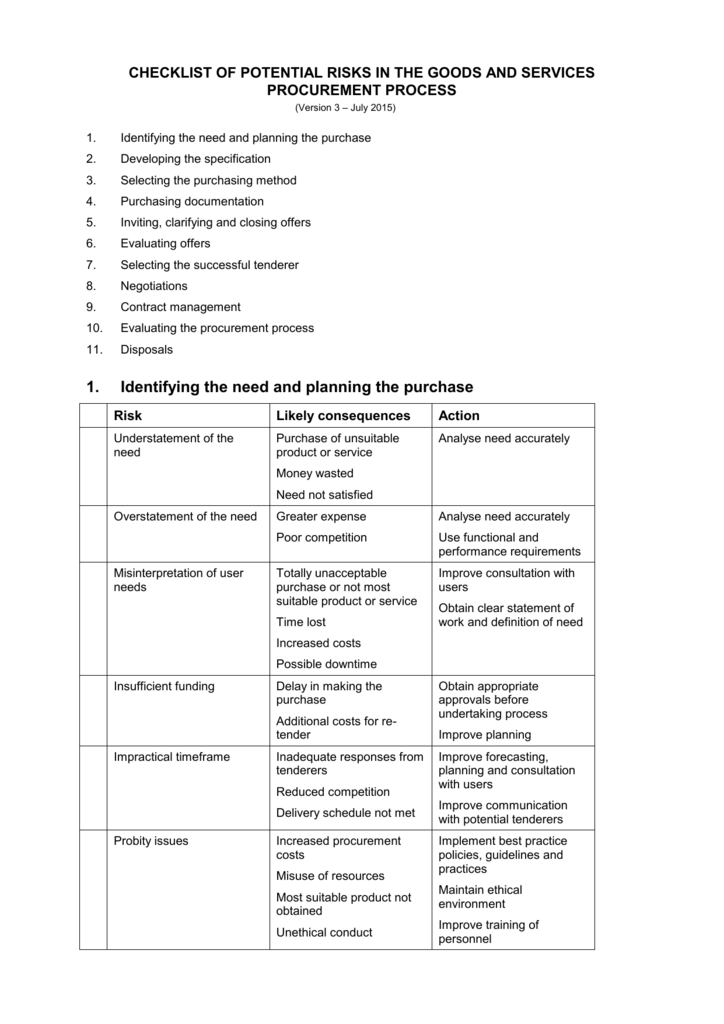What Is A Process Of Closing Procurement
The Close Purchase Orders process verifies that the number of close days defined for the purchase order's purchasing business unit has elapsed. The system adds the value for the Close Days field to the last activity date to determine whether the required number of grace period days has passed. Stronghold crusader 2 download full game free.
Introduction
The close procurements process is one of the two closing processes defined in the PMBOK. This process should be used to close all the procurement processes for a project or a particular phase of the project. The outputs are in the form of two sets of documents. One set has the details of completed procurements and the other set has updates to the organizational process assets.
The Outputs of the process
The project documentation as modified over the project life time will contain the initial reference as to what were intended to be procured. The project documentation would include the complete set of request for information, proposals by the vendors, evaluation documents, contract document and so on. The performance reports over the time the procurement was alive are all required information that will help create the necessary output documentation of this process. The performance reports should include not only the structured audit carried out on the seller but also the repost of the work performance reports. The project management plans, as always is the master reference for determining what’s relevant.
A well structure records management system is an essential ingredient in the process. With this in place in would not be too difficult all the necessary records related to the procurement process at the closing stage.
Documents that describe the closed procurements are one of the main outputs of the close procurements process. The buyer notifies the seller formally of closing of the procurement activity. This will be usually through an authorized administrator in the buyer’s organizations. The contract executed between the buyer and the seller would typically specify a formal closure in it. The procurement management plan would also call for a formal closure. In any case it is a desirable action as then a clear marker intimates completion of the action to both the buyer and the seller. Without a formal closure there could be ambiguities whether the seller can move away his resources from the related project and the organizational structure created around the same.

At this stage all the deliverable would have been completed to the buyer’s satisfaction, meaning that the deliverables met the specified acceptance criteria defined in the contract. All the payments due to the seller and for which he has raised a formal invoice would have been completed fully. Hopefully, at this stage all disputes over the terms & conditions of the contract would have been settled. Most often both the parties would have arrived at a negotiated settlement. Failing which they should have completed the arbitration processes and in the worst case, legal remedies.
The other set of documents that comes out of this process is the updates to the organizational process assets. Several parts of these assets may need updates. That would be typically decided by the needs of the particular project. That can vary depending on the organization too. However some areas can be easily identified that positively needs updates. These include procurement file, deliverable acceptance and lessons learned documentation.

The procurement file is a completely indexed, structured file that has complete details of the contract. Closure details are included as a preparation to the project closure phase. It then becomes part of the project closure documentation. The records’ management system mentioned earlier becomes very handy to harvest all the required information.
What Is A Process Of Closing Procurement Form

Benefits Of Project Closure
Deliverable acceptance is about a formal notice to the seller that the deliverables have been accepted or rejected. The contract executed with the seller typically requires that such formal notice be given. In case of rejection too the contract would specify how to deal with that. This document will be updated with the final details. Lessons learned include experience with the procurement, process improvement recommendations that emerged, etc. should be included in the project files for future use on similar projects. If the lessons apply to projects across knowledge areas then these would apply to other projects executed by the organization too.
Comments are closed.